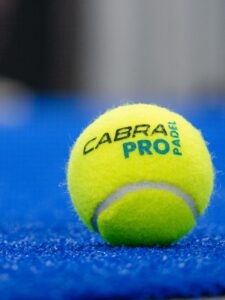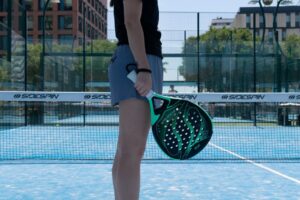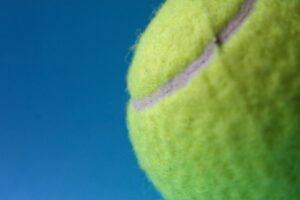The Science behind Padel Balls: Materials and Characteristics Explained
3 min read
The Science Behind Padel Balls: Materials and Characteristics Explained
Are you curious about the little yellow ball that bounces around the padel court with lightning-fast speed? You’re not alone! Padel is a sport that has been gaining popularity worldwide, and while many enthusiasts are well-versed in the game, very few actually understand the science behind the padel ball. Today, we’re going to take a closer look at the materials and characteristics of padel balls, unraveling the secrets behind their incredible performance on the court.
What is a Padel Ball?
Before diving into the science, let’s address the fundamental question: what is a padel ball? Similar to tennis balls, padel balls are hollow, pressurized, and covered in fuzzy felt. They are specifically designed for the game of padel, a mixture of tennis and squash, played in an enclosed court with solid walls and a glass back wall. The padel ball is the heart and soul of this thrilling sport, dictating the pace, trajectory, and overall experience on the court.
The Materials
Padel balls are primarily made of three core materials: rubber, pressurized air, and a felt covering. These materials work hand in hand to determine the ball’s behavior and performance during play. The rubber inner core holds the pressurized air, providing the necessary bounce when the ball hits the ground or racket. Meanwhile, the outer felt covering not only protects the ball but also helps players generate spin and control.
The Characteristics
The characteristics of a padel ball largely depend on its composition and quality. Let’s explore the key factors that make a padel ball unique:
Pressure
Pressurized air plays a crucial role in the performance of the padel ball. When the ball is struck, the pressure inside causes it to compress slightly. Upon contact with the ground or racket, the air inside rapidly expands, propelling the ball forward. The pressure inside a padel ball is carefully calibrated to ensure the right balance between speed, bounce, and control. Higher pressure results in a livelier ball, whereas lower pressure gives a slower game.
Bounce
One of the most vital aspects of a padel ball is its bounce. A ball with good bounce will react predictably when it hits the ground or the walls, allowing players to plan their shots accordingly. The rubber inner core of a padel ball, combined with the appropriate pressure, determines the bounce. The ideal padel ball will provide a consistent bounce throughout the game, ensuring a fair and enjoyable experience for players of all skill levels.
Durability
A padel ball’s durability is essential for both players and their wallets. Nobody wants a ball that becomes flat or disintegrates after a few intense rallies! Quality padel balls are designed to withstand the demands of the game, ensuring they can endure countless impacts without losing their pressure or shape. The felt covering plays a vital role here, protecting the rubber core and helping the ball maintain its durability.
Conclusion
Now that we’ve explored the science behind padel balls, you can better understand why they behave the way they do. The materials and characteristics of these little yellow wonders affect everything from speed and bounce to durability and control. So the next time you step onto the padel court, take a moment to appreciate the complex science behind the ball you’re playing with. And remember, mastering the art of controlling that padel ball can take your game to a whole new level!







